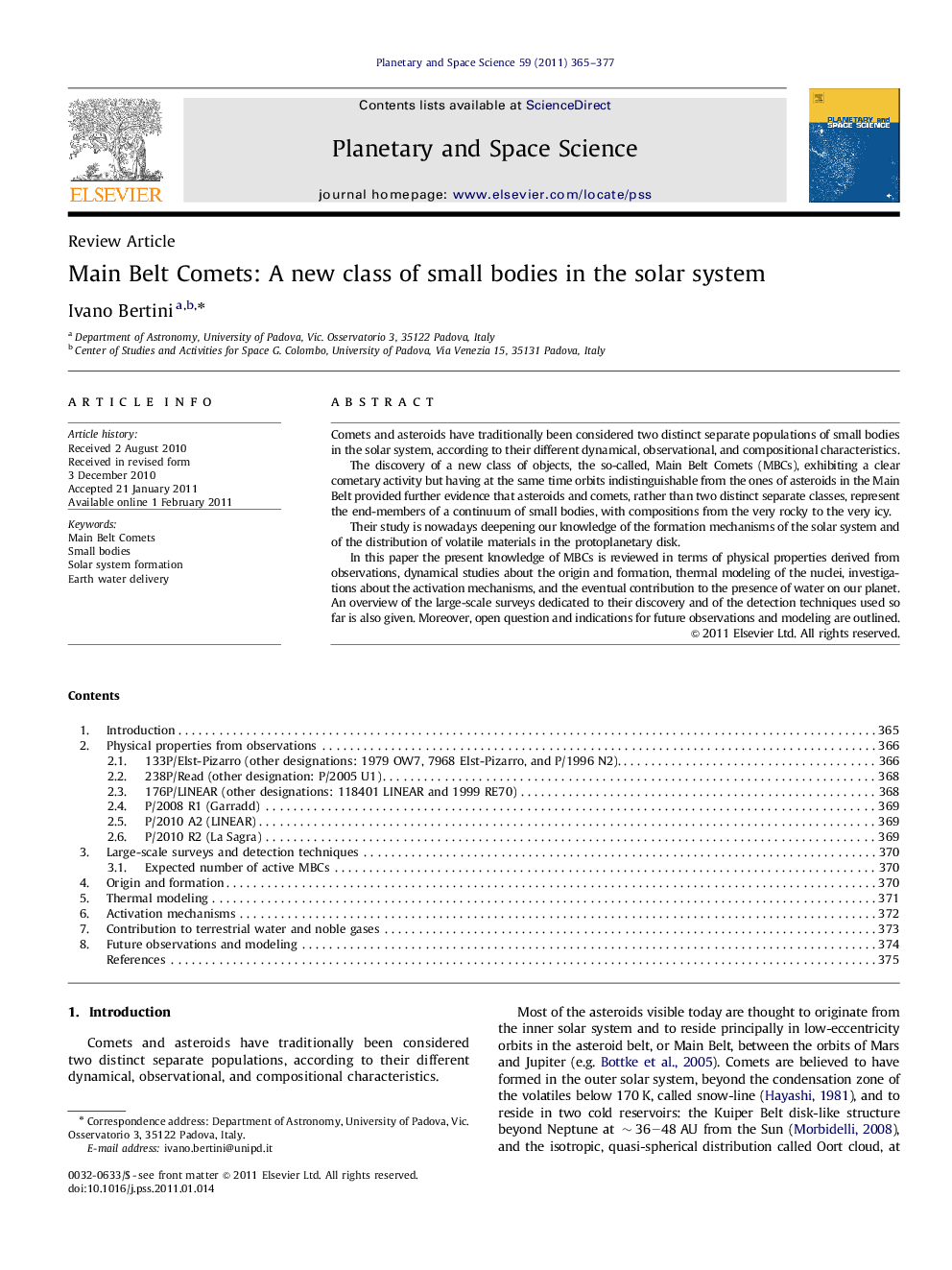| Article ID | Journal | Published Year | Pages | File Type |
|---|---|---|---|---|
| 1781862 | Planetary and Space Science | 2011 | 13 Pages |
Comets and asteroids have traditionally been considered two distinct separate populations of small bodies in the solar system, according to their different dynamical, observational, and compositional characteristics.The discovery of a new class of objects, the so-called, Main Belt Comets (MBCs), exhibiting a clear cometary activity but having at the same time orbits indistinguishable from the ones of asteroids in the Main Belt provided further evidence that asteroids and comets, rather than two distinct separate classes, represent the end-members of a continuum of small bodies, with compositions from the very rocky to the very icy.Their study is nowadays deepening our knowledge of the formation mechanisms of the solar system and of the distribution of volatile materials in the protoplanetary disk.In this paper the present knowledge of MBCs is reviewed in terms of physical properties derived from observations, dynamical studies about the origin and formation, thermal modeling of the nuclei, investigations about the activation mechanisms, and the eventual contribution to the presence of water on our planet. An overview of the large-scale surveys dedicated to their discovery and of the detection techniques used so far is also given. Moreover, open question and indications for future observations and modeling are outlined.
Research highlights► This paper reviews the present knowledge on Main Belt Comets. ► Their physical properties from observations are reported. ► Studies on origin and formation, and activation mechanisms are discussed. ► The paper contains an overview on the contribution to the water presence on Earth. ► Open questions and indications for future observations are also outlined.
